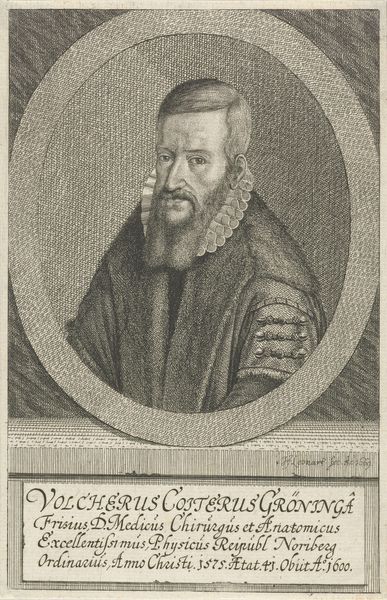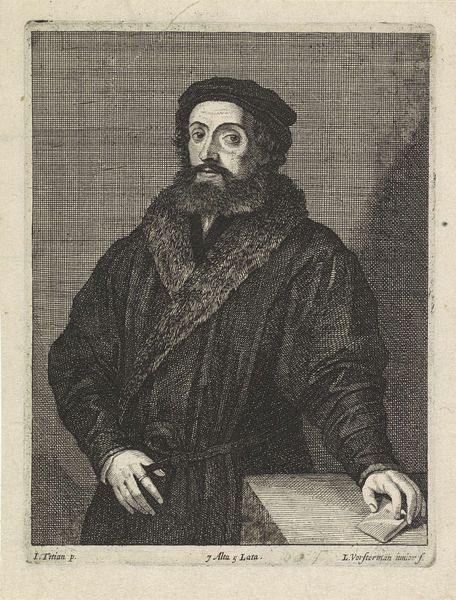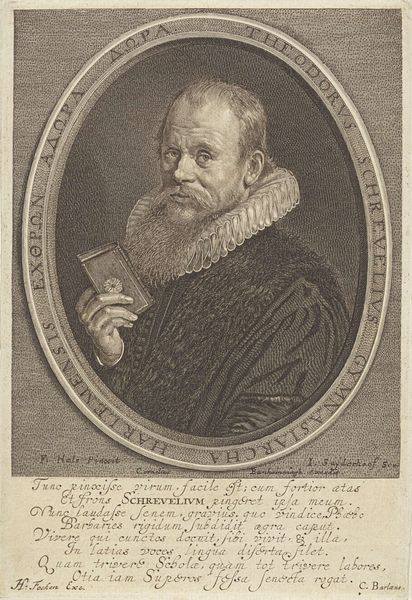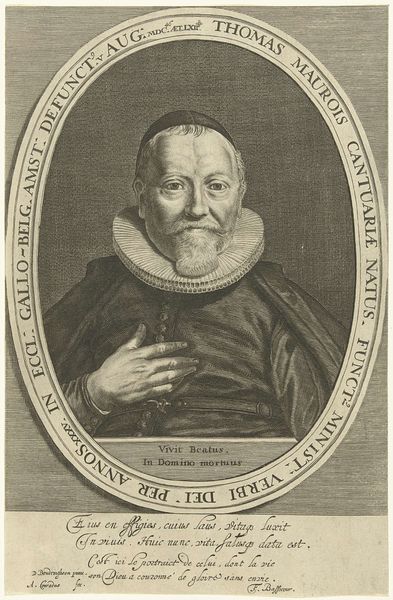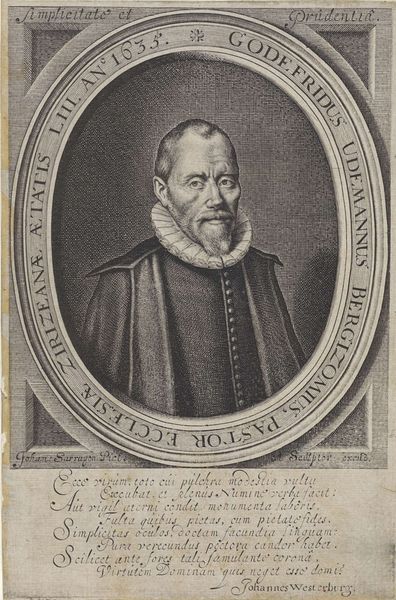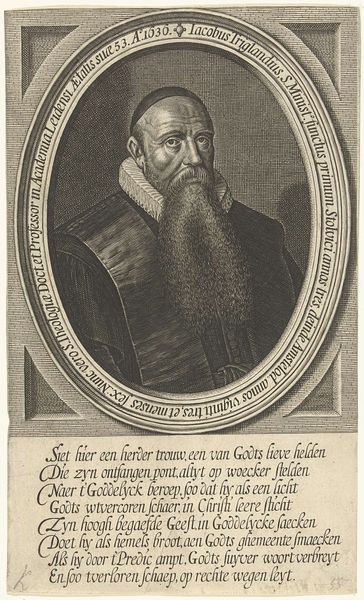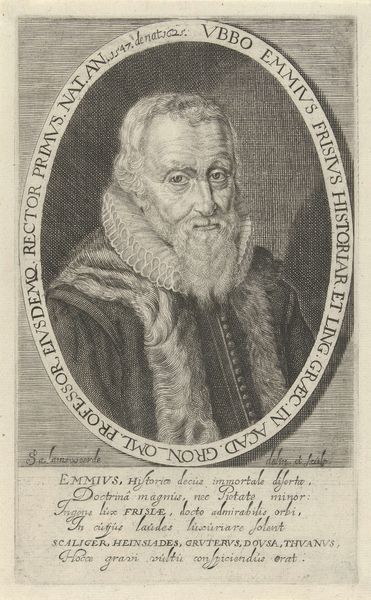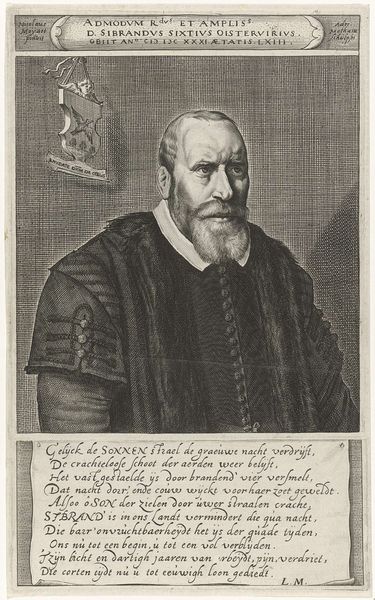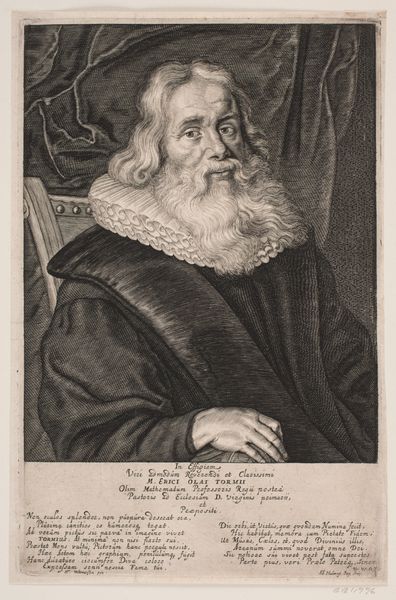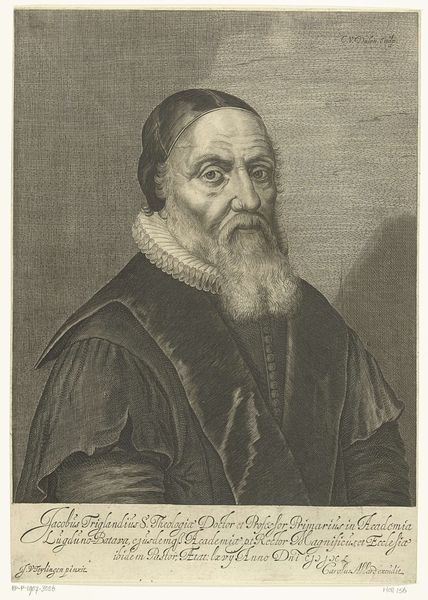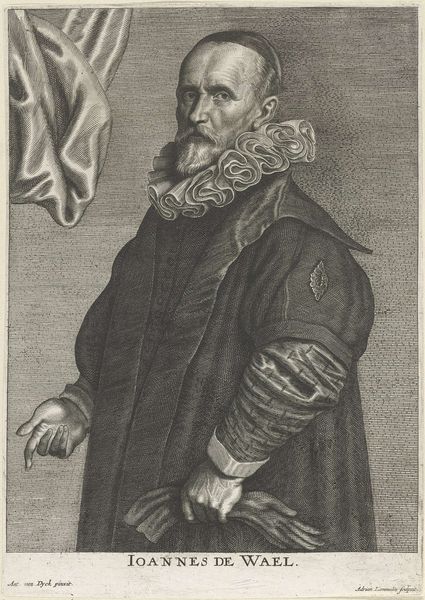
metal, engraving
#
portrait
#
baroque
#
metal
#
old engraving style
#
personal sketchbook
#
history-painting
#
engraving
Dimensions: height 175 mm, width 130 mm
Copyright: Rijks Museum: Open Domain
Curator: Look at this intriguing piece, a portrait engraving titled "Portret van Casper Erasmus Brochman" crafted by Albert Haelwegh, dating back to after 1650. Editor: My first impression is gravitas, like peering into the soul of a thoughtful, if somewhat world-weary, scholar. All those dense lines and intricate details feel like tiny wrinkles etched on his face. Curator: Indeed. Consider Brochman's role as a Bishop and professor of theology. The Baroque style here is not just decorative, it's integral to the expression of power and status. Look how his oversized robe practically overflows off the canvas. Editor: He reminds me of my old university professors, surrounded by a fort of books and sporting a serious beard. Did they all coordinate on that uniform? I love how the light catches that stiff collar of his, it’s so…of its time. Curator: Precisely. The portrait is rendered in meticulous detail, emblematic of its era but also telling of his socio-political clout as he rises through academic ranks during this period. Think of what it represents to have that power during the post-reformation period in Denmark. Editor: Those books looming behind him...they feel a little menacing. As if knowledge itself could become an oppressive force! Is that just me? He does look peaceful, but underneath, you can almost see a faint anxiety. Or perhaps it’s indigestion? It makes you wonder who *really* decides which ideas are worth preserving in those tombs. Curator: I appreciate that read; it brings in interesting considerations regarding not only representation but the ethics around canon formation in art and knowledge production as a whole, especially when looking at old, white, cisgender men as gatekeepers. It certainly begs the question: Whose histories are legitimized, and whose are omitted? Editor: Exactly! It gives the portrait so much more depth and relevance beyond being just a historical document. Thinking about the context gives this piece such resonance, a whisper from the past about issues still haunting us today. I see it now as more than just ink; it’s a battleground of ideas rendered in lines and shadows. Curator: Absolutely, seeing it through the lens of contemporary intersectional narratives really reveals the portrait's inherent complexities, and its relevance even centuries later. Editor: Couldn’t have said it better myself! I will look at every painting now wondering what ghosts lie just beneath the surface.
Comments
No comments
Be the first to comment and join the conversation on the ultimate creative platform.

